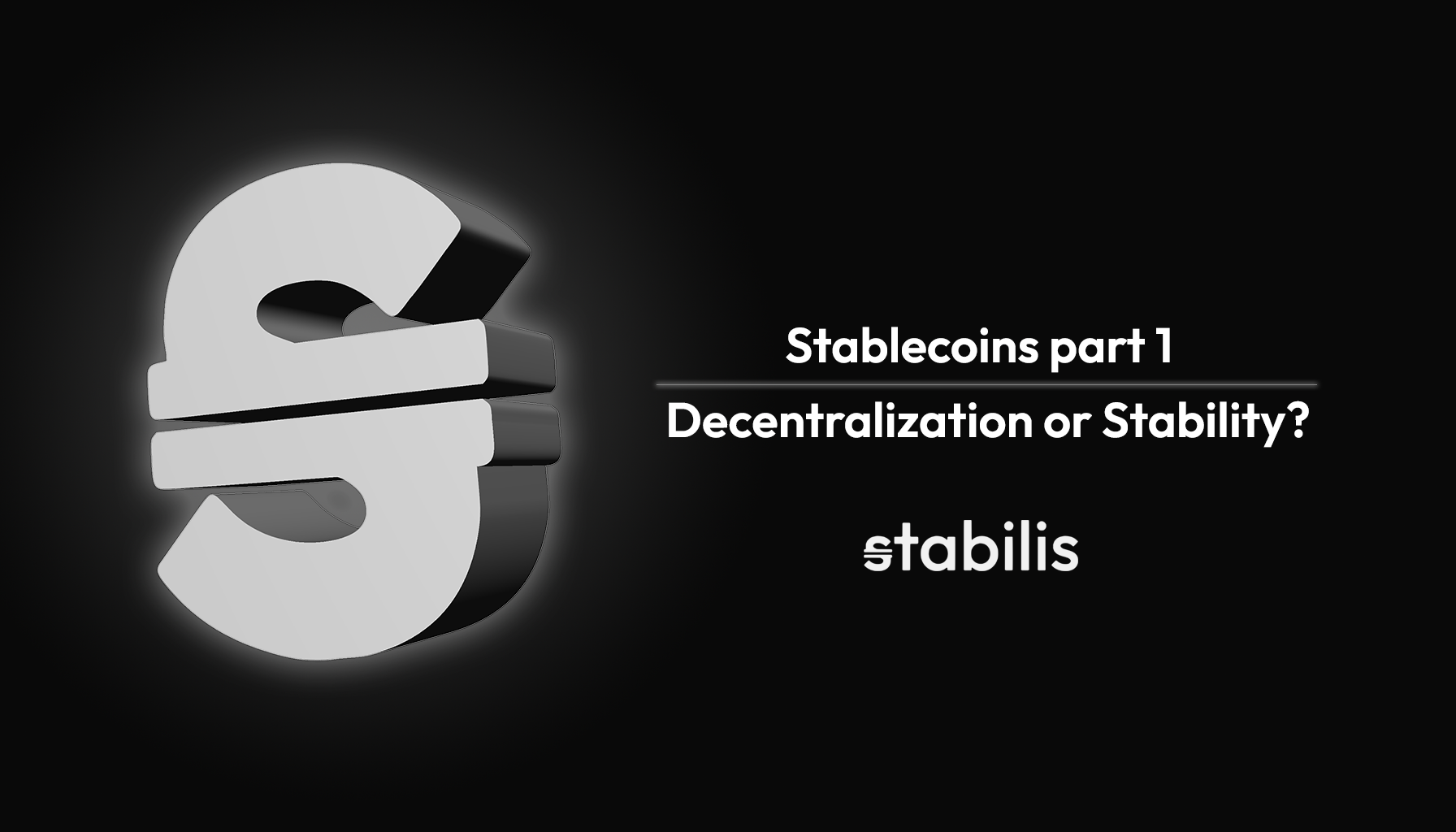Welcome to this three-part series on Stabilis. Reading these blog posts, you will gain an understanding of how Stabilis works and why it is designed this way. Each post will serve as a necessary piece in this puzzle of understanding. We will explore:
- Current stablecoin designs
- Why they don't work
- How Stabilis solves this
Currently, there are two main forms of stablecoins: fiat-backed and crypto-backed. We will leave out purely algorithmic ones for now; although they seem promising in theory, they have failed too often.
Fiat-backed stablecoins, such as USDT and USDC, are backed by real money managed by a central entity. This inherently centralized setup obviously clashes with the decentralized ethos of cryptocurrency. Not ideal.
On the flip side, crypto-backed stablecoins like DAI and LUSD operate without a central authority, better aligning with the principles of decentralization. However, keeping their value stable - maintaining the peg - is a significant challenge. DAI, for instance, has often traded above its intended value, and LUSD still faces similar issues. Achieving a consistent peg without any centralization seems almost impossible.
This constant tension between maintaining peg and preserving decentralization is problematic. To understand why these decentralized crypto-backed stablecoins struggle, one first needs to know how they work.
Most crypto-backed stablecoins work in roughly the same way. They are created by borrowing them against collateral worth more than the stablecoins themselves. The minimum ratio between collateral value and debt value is called the minimum collateralization ratio (MCR). If the value of the collateral falls below this MCR, the loan can be liquidated: another person pays off the debt and receives the collateral, which is worth more than the debt. This ensures that the stablecoins are always backed by assets worth at least their intended value. To prevent liquidation, the borrower can of course always repay the loan and retrieve their collateral.
Because of this system, and due to the perception that a stablecoin is worth exactly its peg, the supply and demand curves for such a stablecoin often meet at roughly its peg. However, the keywords here are "perception" and "roughly." There are valid reasons why a stablecoin might not trade at its peg. Why, you ask?
You’ll find out in the next blog post!
Want to stay up to date? Join our Telegram or follow us on Twitter.







